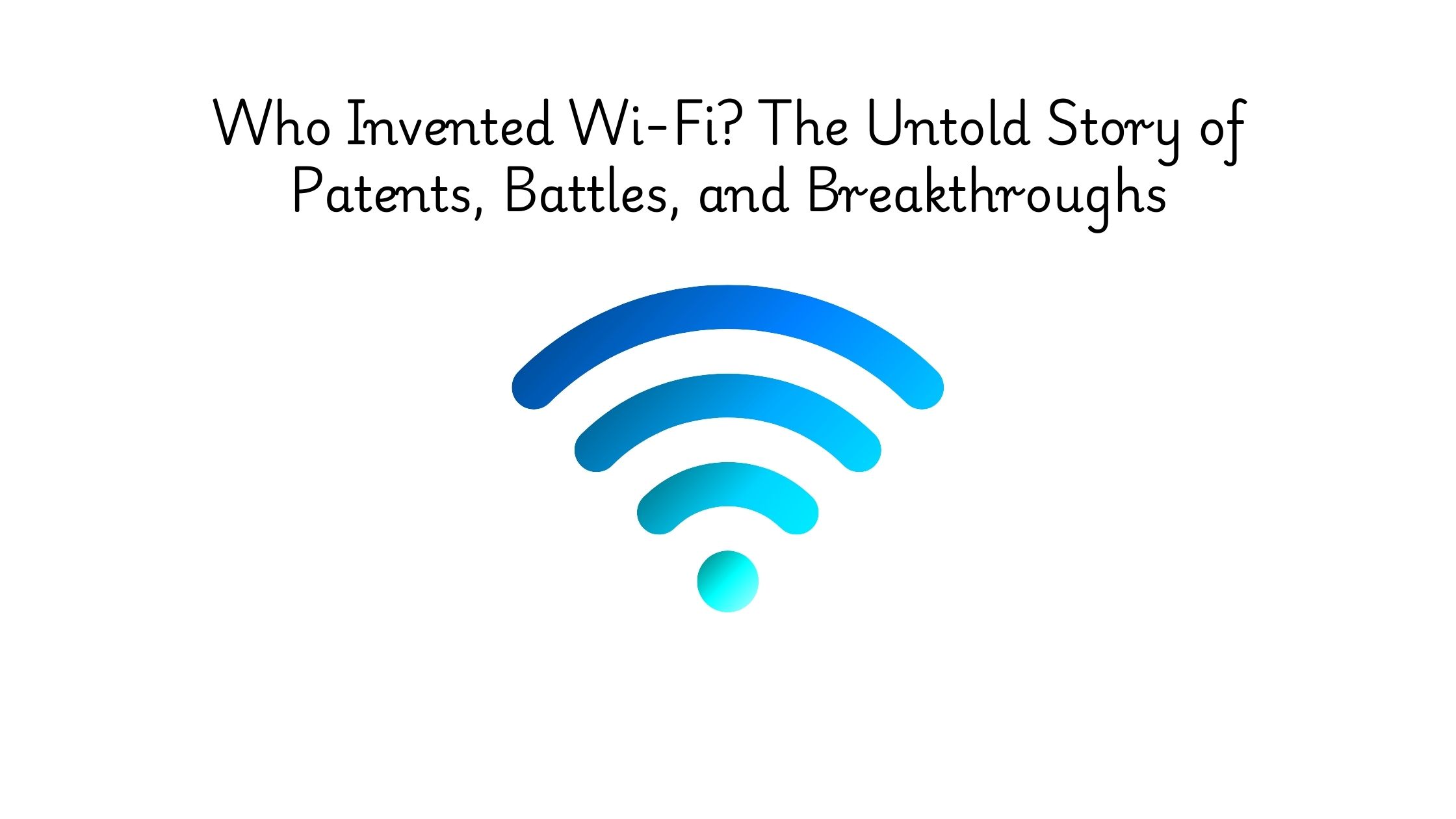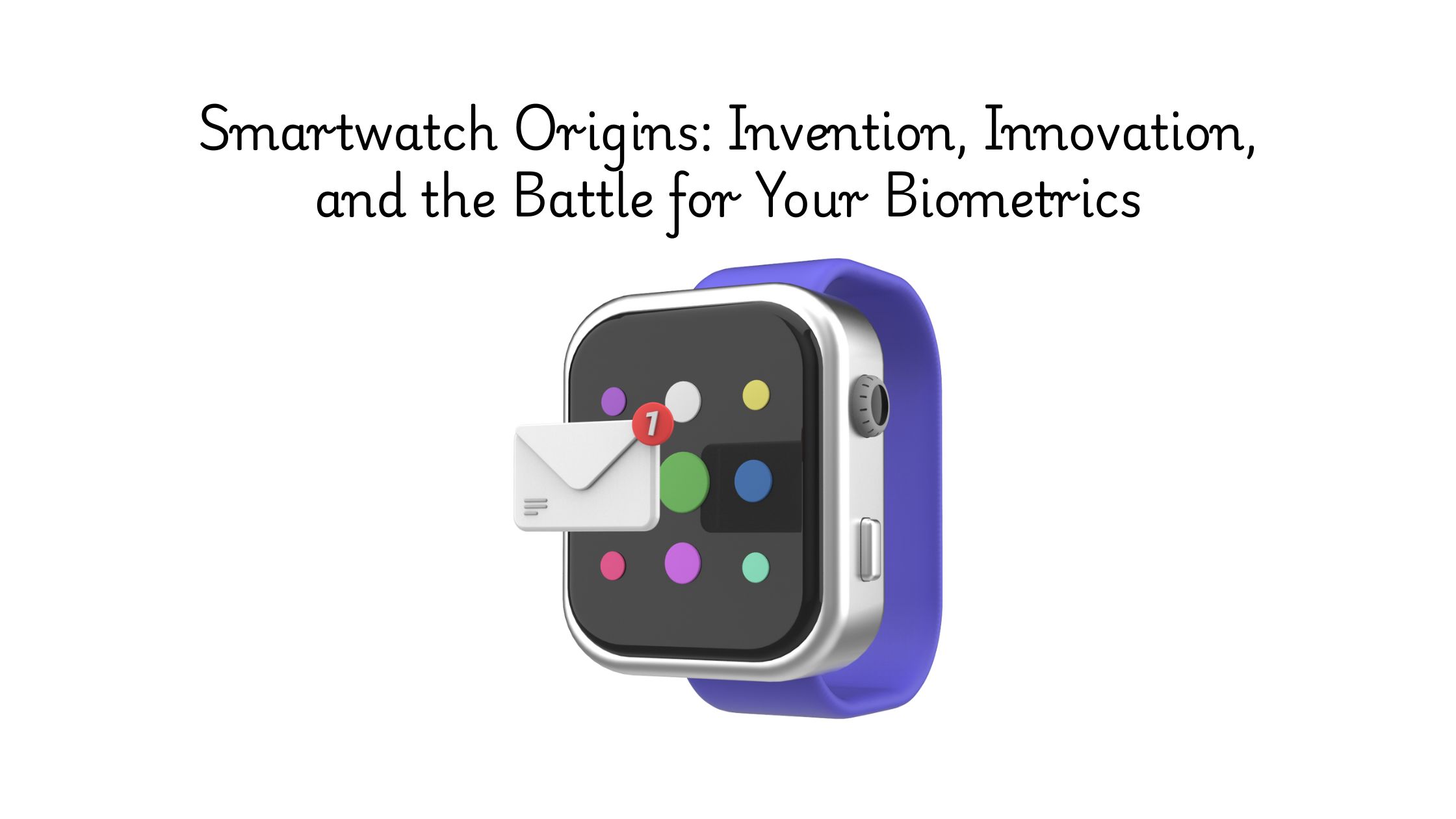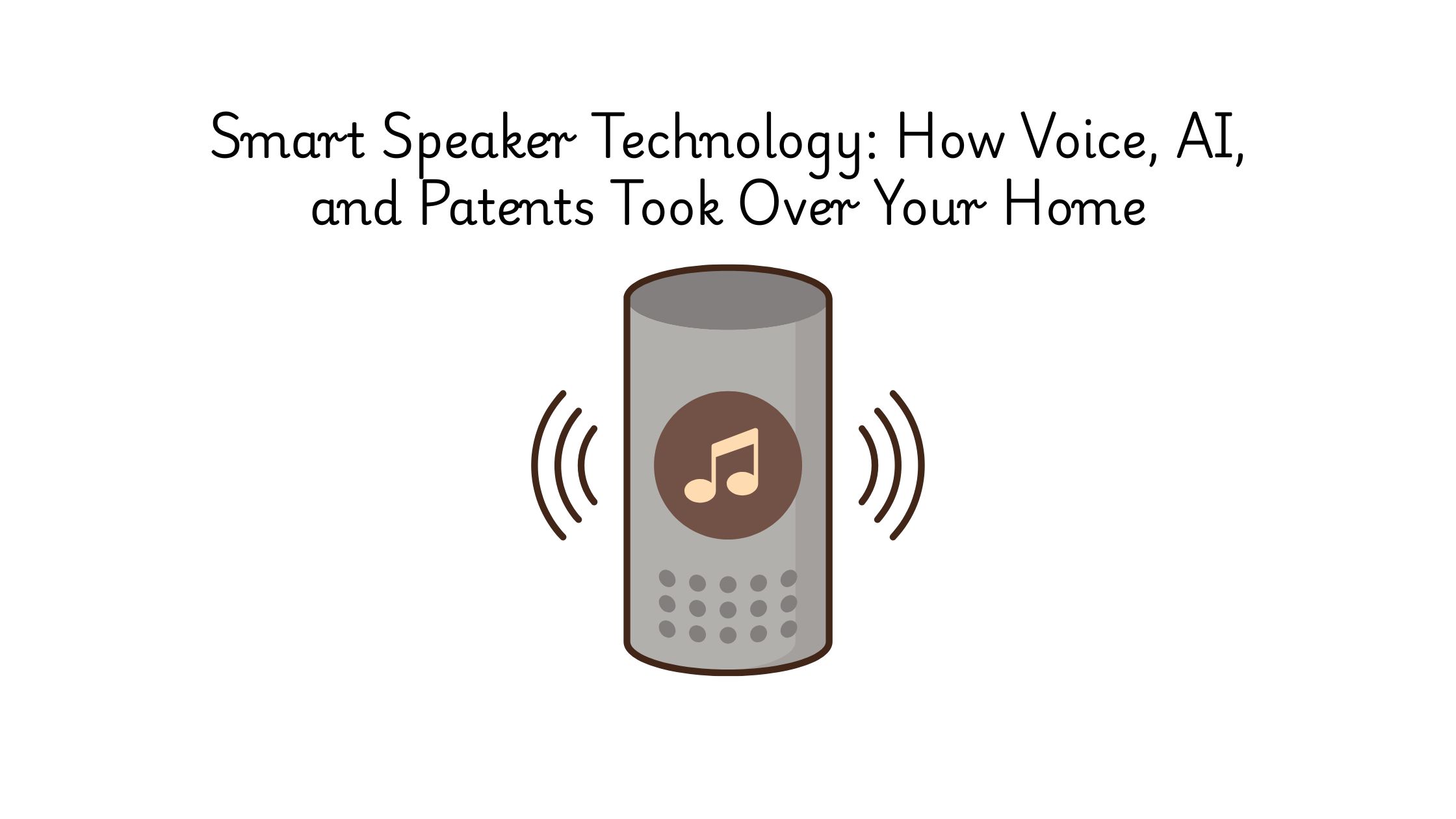You probably don’t think twice when you pop in your earbuds. Whether you’re tuning into a podcast, zoning out to lo-fi beats, or taking a call in a noisy airport, they’ve become part of how we live and block out everyday life.
But most people have no idea where earbuds came from. They didn’t appear with the iPod or AirPods. They didn’t even start with stereo sound.
The invention story of earbuds spans over a century, from bulky military headsets to NASA spinoffs to sleek, wireless designs powered by thousands of miniaturized patents. Along the way, there were lawsuits, licensing battles, and a surprisingly intense race to own the ear canal.
In this article, we’ll trace the real origin of earbuds, unpack the IP drama that shaped them, and show how tools like Global Patent Search help untangle the complex patent web behind what you wear in your ears.
The Origins: Where Did It All Begin?
The roots of earbuds stretch back over 130 years, long before AirPods, MP3s, or even stereo sound. The story starts in the 1890s with the invention of telephone headsets.
One of the earliest documented personal audio devices was the Electrophone system, patented in 1895 by Clement Ader. It allowed British subscribers to listen to live theatre performances via a pair of wired earpieces, essentially an early, wired broadcast system for the elite.

Source – Musical America
But the real momentum began during World War I and II, when head-mounted receivers were used by radio operators in aircraft and ground units. These early headsets were bulky and uncomfortable but served a critical military function. The shift toward miniaturization started here, driven by wartime engineering.
In the 1950s, the first significant consumer mini-earphone innovation came from Otto K. Schmitt, a biomedical engineer whose work on miniaturized components influenced medical electronics and audio gear alike. Around the same time, radio earpieces became popular among surveillance operatives and broadcasters.
The real turning point came in 1979, when Sony released the Walkman. It came bundled with lightweight foam-cushioned stereo earphones, the MDR-3L2, which redefined what portable audio could feel like. While not “in-ear” by modern definitions, they laid the cultural groundwork for earbuds as a personal, mobile accessory.
The first true in-ear headphones (what we’d now call earbuds) emerged in the 1980s–90s, built around canal-conforming designs for better noise isolation. Brands like Etymotic and Sony began producing insert-type earphones focusing on high fidelity and passive isolation.
But the modern explosion, wireless, smart, touch-sensitive, wouldn’t happen until decades later. And behind that leap? A wave of patents and corporate one-upmanship.
From Idea to Real-World Tech: How Earbuds Became Smart, Wireless, and Popular?
For decades, earbuds were just basic. They played audio, sometimes poorly, and rarely fit well. But the last 20 years changed everything, thanks to breakthroughs in wireless protocols, micro-drivers, battery miniaturization, and a new frontier: on-device intelligence.
The first wave of Bluetooth-enabled earbuds arrived in the early 2000s, mostly as mono earpieces for phone calls. Products like the Jabra BT200 (launched in 2003) offered wireless freedom, but audio quality and comfort were limited. Still, it proved that personal audio didn’t need wires, just better tech.
Then came Apple.
In 2001, the iPod launched with Apple’s iconic white earbuds. They were not revolutionary in tech but culturally defining. They symbolized mobility, individualism, and Apple’s design-first ethos. But they were still tethered.
The leap to true wireless earbuds came in 2015, when several companies, including Bragi and Samsung, released cord-free models. Bragi’s The Dash offered fitness tracking, gesture controls, and on-board storage, as well as a glimpse into earbuds as wearable computers.

However, in 2016, Apple dropped the wires for good with the launch of AirPods. Packed with the W1 chip, automatic pairing, and dual-microphone beamforming, they solved the usability pain points that plagued earlier attempts. Reviews were mixed initially, but by 2019, AirPods were a cultural phenomenon and a $12 billion business line.
The picture below shows the evolution of Apple earphones:
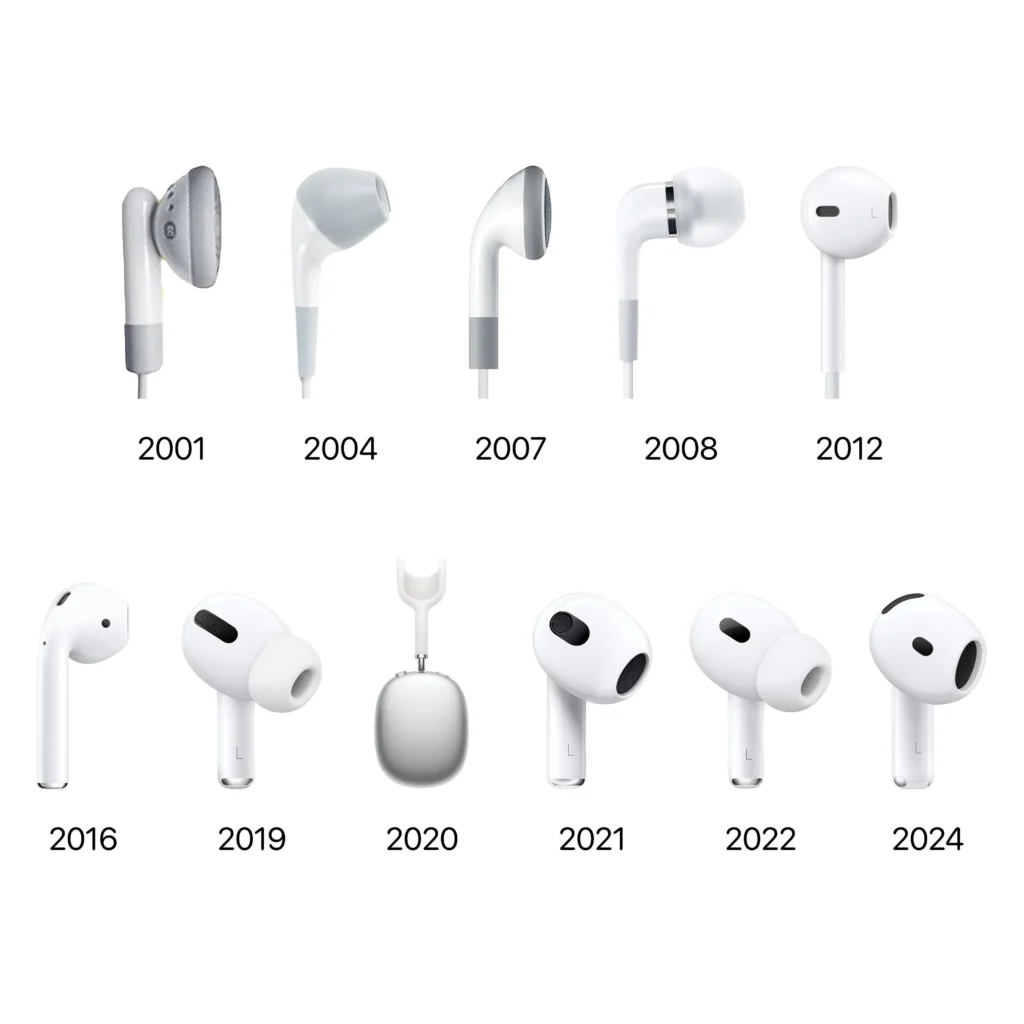
Source – Reddit
This kicked off a race for feature-packed earbuds:
- Google launched Pixel Buds with real-time translation.
- Samsung Galaxy Buds integrated with their ecosystem and fitness gear.
- Sony’s WF-1000XM4 brought noise-canceling to wireless earbuds.
- Bose, Jabra, and Sennheiser battled on sound quality and fit.
Each generation added something new: active noise cancellation, voice assistant integration, touch controls, biometric sensors, and spatial audio. Each advance built on patented breakthroughs in signal processing, battery architecture, antenna design, and form factor innovation.
The shift was clear: earbuds were no longer just a way to listen. They were smart, responsive extensions of your digital life and IP gold mines.
How Earbuds Got Their Start: Foundational Patents from 1975–1995
Today’s wireless earbuds may feel like cutting-edge tech, but many of their core building blocks were already being explored decades ago.
To trace those early innovations, we used Global Patent Search (GPS) to run a semantic query:
“Compact in-ear audio devices that deliver sound directly into the ear canal, often featuring wireless connectivity, noise cancellation, and touch controls for portable, hands-free listening.”
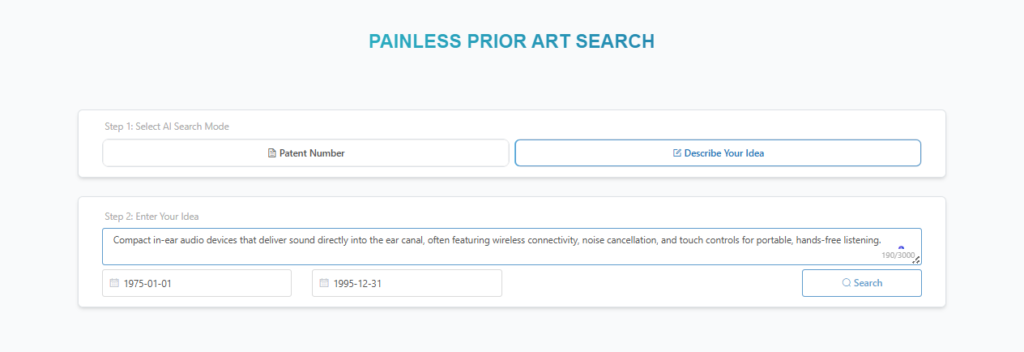
We focused on patents filed between 1975 and 1995. This was a formative window when personal audio was evolving rapidly, driven by breakthroughs in hearing aids, stereo miniaturization, and early noise control systems. This era didn’t produce smart earbuds as we know them, but it laid the technical foundation for wireless sound delivery, canal-fit comfort, and active listening features that now define the category.
Here’s what GPS surfaced: a list of landmark patents that shaped the path from military headsets to wearable audio companions.
| Priority Date | Patent Number | Title | Why It Matters? |
| 1975-10-17 | CA1100618A | Wireless Hearing Aid | Early wireless audio transmission to a single ear paved the way for wireless in-ear devices. |
| 1982-12-15 | EP0128894A1 | Auditory Protection Apparatus | Introduced noise elimination in personal audio gear; early noise cancellation concept. |
| 1983-03-29 | DE3311341A1 | Earphone for Devices Warning Against Bed-wetting | Used in-ear design to deliver direct acoustic signals; early form of earbud-style alerting. |
| 1983-05-31 | FR2547152A1 | Earphone Type To Insert In The Ear | One of the earliest patents for true in-ear speaker placement; precursor to canal-style earbuds. |
| 1984-11-14 | US4574912A | Ear Muff Hearing Aid | Combined headband structure with audio amplification; early form of wearable stereo headphones. |
| 1989-10-25 | IT1236613B | Intraauricular Acoustic Device | Articulated insertable device with speaker and amplifier; signaled the miniaturization path of earbuds. |
| 1990-03-30 | DE4010372A1 | Hearing Aid with In-Ear Insert and Noise Cancelling | First to describe active sound cancellation using dual transducers; core to ANC earbuds. |
| 1991-01-28 | JPH0595591A | Acoustic Reproducing System | Enhanced in-ear sound delivery using DSP-controlled output; important for digital audio control in earbuds. |
| 1991-11-08 | GB2261343A | Directional Single-ear Earphone | Pioneered directional sound through a single ear; informing spatial audio in modern earbuds. |
| 1994-03-19 | AU1901695A | Audio Device | All-in-one wearable audio system; early fully integrated earbud design concept. |
| 1995-03-08 | US5680465A | Headband Audio System with Acoustically Transparent Material | Described directional audio near the ear using wearable form factors; transition from headphones to wearable pods. |
These patents collectively highlight the industry’s focus on miniaturization, user convenience, and integration of advanced functionalities into compact devices.
From Features to Friction: How IP Shapes the Earbud Industry
Earbuds might look minimalist on the outside, but inside, they’re loaded with tightly packed innovation and just as tightly contested IP. As wireless earbuds went mainstream, so did the lawsuits, licensing showdowns, and patent offensives.
Here are some of the most significant (and often underreported) legal battles in this space:
Apple vs. Koss (2020–2022)
In 2020, legacy audio brand Koss Corporation filed a lawsuit against Apple, accusing it of infringing on five patents related to wireless headphone technology, specifically in its AirPods and Beats product lines. Koss claimed it had developed the foundational technology for wireless earbuds and had even tried to negotiate with Apple years earlier.
Apple struck back with a countersuit. But by 2022, the two companies quietly settled out of court, avoiding a public trial.
Why it matters: This was one of the first high-profile lawsuits to target AirPods, and it spotlighted how older audio patents were suddenly valuable again.
Bose vs. Beats (2014)
Before Apple acquired Beats, Bose sued Beats Electronics (then a major rival) for allegedly infringing on its noise-cancellation patents, critical tech for premium earbuds. The case was filed just months after Apple’s acquisition deal was announced.
While the case was settled out of court in late 2014, it resulted in Beats temporarily pulling its products from NFL broadcasts due to Bose’s exclusive sponsorship.
Why it matters: It showed that active noise cancellation wasn’t just a feature battle; it was a patent battle too.
One-E-Way vs. Apple and Sony (2020)
California-based One-E-Way, which held early patents around personal audio streaming over Bluetooth, sued both Apple and Sony, alleging their wireless earbuds violated patents granted as early as 2008. The complaint centered on how audio is transmitted securely and privately between paired devices. As of 2023, the case had not reached a final ruling.
Why it matters: Even small companies with a handful of foundational patents can challenge giants, and those early Bluetooth-related patent filings still hold sway.
These cases show that the war for your ears isn’t just being fought on shelves. It unfolded in courtrooms and patent offices, where the winner isn’t always the company with the best sound but the one that filed first.
Standards, Licensing, and IP Complexity
Wireless earbuds are everywhere, but unlike Wi-Fi or wireless charging, they aren’t built on a shared, open standard. There’s no universal certification body. No IEEE protocol. No Qi-style licensing pool. And that’s exactly what makes the patent landscape around them so fragmented and risky.
Instead of industry-wide coordination, what we see in the earbuds space is platform-level control. Each major player, Apple, Sony, Samsung, Bose, and JBL, builds its ecosystem of hardware, firmware, codecs, and companion apps. And they patent heavily at every level.
Proprietary Protocols and Fragmentation
Take audio codecs. Apple’s AirPods use AAC, while Sony prefers LDAC. Qualcomm-backed aptX Adaptive is gaining traction in Android earbuds. There’s no unified path to audio quality, latency, or power efficiency, just IP-divided routes that brands fiercely protect.
Even basic features like active noise cancellation, touch control gestures, or auto-ear detection are often covered by overlapping patents, with no clear agreement on what constitutes “essential” functionality.
No Patent Pool = More Licensing Headaches
Unlike Wi-Fi or Bluetooth, there’s no central patent pool that helps manufacturers license wireless earbud tech in a streamlined way. That means companies need to negotiate directly, often in private, for access to technologies around:
- Case-to-earbud charging and power management
- Secure wireless pairing
- Gesture interpretation and
- Adaptive noise algorithms.
Smaller brands and OEMs are most exposed here. Without deep IP counsel, they risk inadvertent infringement just by launching a new product.
Why IP Risk Will Keep Growing?
As earbuds become smarter, integrating voice assistants, biometric sensors, spatial audio, and AI-based sound tuning, the number of patent classes they touch explodes. And so does the complexity.
Even if two products perform the same task, they may rely on completely different (and patented) methods of doing it. That makes prior art searches and IP clearance critical, especially for new entrants in this crowded space.
So, with no global standard, shared licensing model, and thousands of patents in play, how do you explore what’s already been filed?
How Global Patent Search Can Help You Navigate This Tech?

From codecs to charging cases, from touch sensors to spatial audio, earbuds are a dense web of innovation and overlapping IP. And the problem? There’s no map.
That’s where Global Patent Search makes a difference.
You don’t need to be a patent attorney. You don’t need to know classification codes. You just need to describe your idea in simple language, like we did above. Say:
- “Earbuds with built-in voice translation”
- “A charging case that switches audio profiles”
- “Fitness tracking via ear canal sensors”
The GPS tool will map that feature to relevant global patents. In plain language. At speed.
It helps you:
- Validate novelty before filing your application.
- Find prior art around smart features or form factor design.
- Explore who owns what in an unstandardized IP space.
- Avoid costly infringement in a field full of silent tripwires.
Whether you’re an innovator building the next AirPods killer or a founder trying to avoid the next Koss vs Apple scenario, GPS helps you see what others miss.
In a market where filing first beats sounding better, Global Patent Search is your unfair advantage. Try the Global Patent Search tool now.


